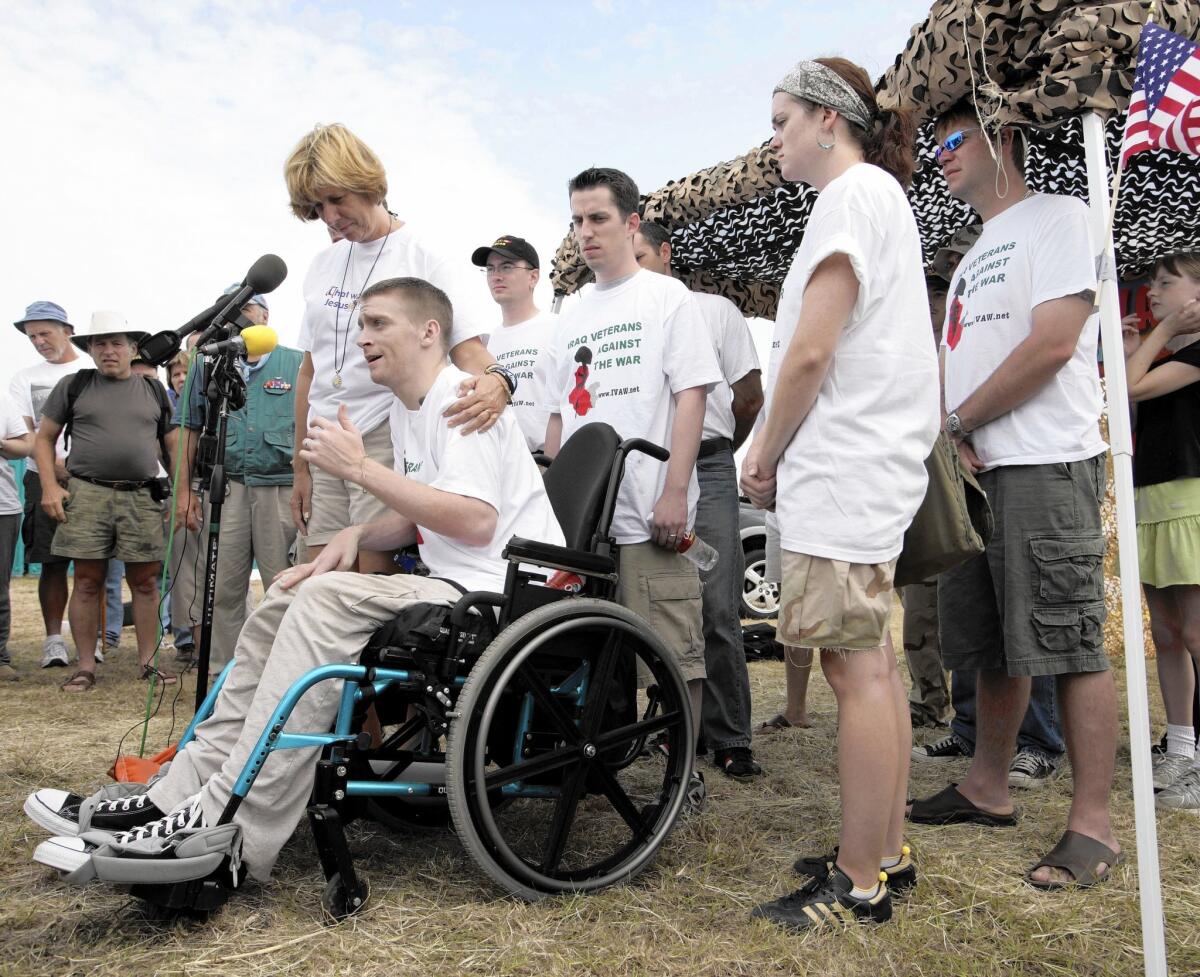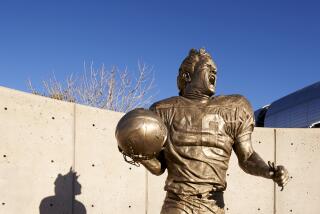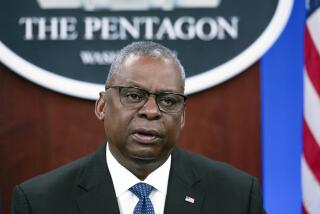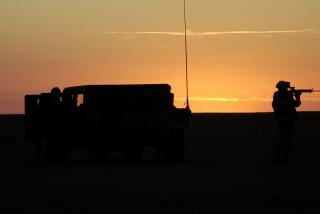Tomas Young dies at 34; soldier became antiwar activist after paralyzing injury

He gave up just once, opting last year to enter hospice care and stop taking nutrition through a feeding tube.
He wanted an end to the pain and surgeries and tubes and pumps that had sustained him after he was paralyzed from the chest down by an Iraqi sniper’s bullet.
Then Tomas Young changed his mind and decided to live after all.
The Army veteran had spent nearly a decade railing against an administration that sent young Americans into what he believed was a deeply unjust war. He had worked hard to prevent others from joining the military as he had after Sept. 11. He fought the Department of Veterans Affairs for better care.
On the eve of what was supposed to have been his death in 2013, he wrote an angry letter to former President George W. Bush and former Vice President Dick Cheney on behalf of “the human detritus your war has left behind, those who will spend their lives in unending pain and grief.” The brief missive went global.
Young transformed from military volunteer to disabled veteran to antiwar activist and became the subject of the scathing documentary “Body of War.” For many, he symbolized the unending cost of battle.
On Monday, Young died at age 34, 10 years after the sniper’s bullet pierced his spinal cord. On Tuesday, Veterans Day, his wife went to a funeral home here to arrange for Young’s ravaged body to be cremated.
Ralph Nader, who met Young at Walter Reed Army Medical Center in Washington, D.C., said Tuesday that the soldier’s legacy was one of “moral courage.” Filmmaker and former talk show host Phil Donahue, who decided to make “Body of War” after spending several hours with Young and his mother, said the activist “leaves a very large footprint in the landscape of war dialogue.”
Young’s mother, Cathy Smith of Kansas City, Mo., said the cause of death was still unknown, but she was just glad her oldest child didn’t hurt anymore.
“If Tomas Young could get up every day and be in the pain he was in and still speak out about the war, it made it easier for the other guys,” Smith said Tuesday. “He always said if we saved one 18-year-old from joining the military, that’s enough. And he did.”
Young, a Missouri native, enlisted in the Army two days after Sept. 11, 2001. He was 21. After completing basic training at Ft. Hood, Texas, he shipped out to Iraq. He was riding through Baghdad’s Sadr City neighborhood in an unarmored, uncovered Humvee when he was shot.
He had been in Iraq five days. It was April 4, 2004.
When Smith finally met up with her son at Walter Reed not long after the shooting, he had just been brought out of a medically induced coma. At first, she said, “he was very despondent.” He contemplated killing himself. “He didn’t want to go on.”
He had always been political, Smith said, and she figured that because they were in the nation’s capital, they might as well make the most of it.
“So I said, ‘Surely there’s someone you want to meet,’” Smith recalled. “He said he wanted to meet Ralph Nader. He was a fan of his out-there politics, his consumer advocacy.... I got a hold of Ralph Nader’s people.... Ralph called back and asked if he could bring a friend.”
Nader showed up with 30 books and Donahue. When the men walked in to his hospital room, Young was so thin that his cheekbones jutted. He was on morphine, in pain, in and out of consciousness, Donahue said.
“Tomas was paralyzed from the nipples down; that meant he would never walk again,” Donahue recalled Tuesday. “He couldn’t cough. You use your abdominal muscles to cough. There’s no power over anything from his chest down. Twenty-four years old. Prime-of-life male. Impotent.
“The first thing you think is why him and not me,” Donahue said. “I thought people should see this. I believe that if you’re sending young men and women to war, you should show the pain. So I decided to make this film.”
Smith said that at first she and Young had reservations. They were “just Midwestern, quiet people, didn’t want to be in the limelight.” But then her son realized, she said, that showing the world what the war cost him just might save another young man or woman.
“When an 18-year-old thinks of war, he thinks of the glory of a flag-draped casket,” Smith said. “They never think they’ll come back and never be able to have an erection again.... If one son or daughter saw this movie and decided to get a Pell grant and go to school, that was his mission.”
Once Young was able, a film crew followed him everywhere. The story of his life and activism is interspersed in “Body of War” with footage of Congress’ debate on the Iraq war resolution. Donahue said one of his favorite stories about Young was a scene from the film.
Young was attending an antiwar rally in Washington. After the march, he was wheeled up to a group of Gold Star family members, people who have lost sons, husbands and brothers and sisters in the war that Young had recently returned from. They were holding pictures of the dead. They leaned over to touch Young, to kiss him.
“Tomas offers them his cheek,” Donahue said. “He leans forward so that they can touch him. He understands why they’re doing this and he’s happy to be their surrogate for this moment. I still have trouble getting through that.”
Smith has a lot of favorite stories about the boy she raised into manhood. When he was 10, she recalled, they lived up the road from a Planned Parenthood clinic in Omaha. Every Saturday, antiabortion protesters would gather to picket the women who had appointments for abortions. Every Saturday, Smith and her son would drive down the hill to throw wire hangers at the protesters bothering “those poor young girls.”
“He’d wake up every Saturday and say, ‘Are we going down the hill?’” Smith recalled with a laugh.
And then there was the more recent day in Austin, Texas, when the movie was shown at the South by Southwest festival. Young was looking great, his mother recalled, “rocking a fedora.”
“He got up in front of the crowd and said, ‘I just want all you young ladies out there to know they’ve solved the problem with erectile dysfunction,’” Smith said. “‘And my mom will be at the door to get the number of anyone who’s interested.’” It got a big laugh.
He was, she said, the best son a mother could ever have.
“His body just wore out,” she said. “From the time he was injured, we knew his life expectancy was short. Every day with him was a blessing.”
Though he was clearly frail, she said, the drive and anger remained, and the call, when it came, was still a shock.
Twitter: @marialaganga
More to Read
Start your day right
Sign up for Essential California for news, features and recommendations from the L.A. Times and beyond in your inbox six days a week.
You may occasionally receive promotional content from the Los Angeles Times.







